Gallery of weapons from K to L
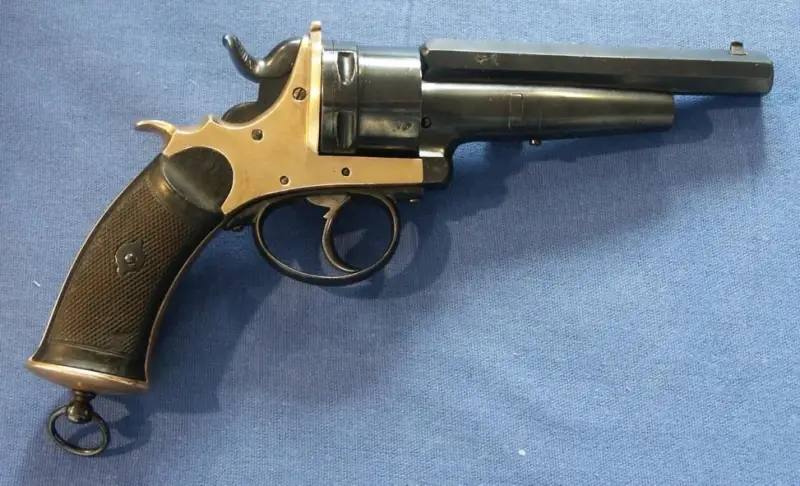
Little dear, playful,
Don't touch weapon father:
It is dangerous, even though it is beautiful.Sergei Durov “Weapons (for a Child)” 1859
Little-known revolvers and pistols. We continue our journey into the world of little-known weapons, and first we will get acquainted with Belgian weapons from photographs by Allen Dobress.
Well, it just so happened that in Belgium no one released it. In Liege there were entire streets of gunsmiths. Moreover, some specialized only in locks, others made only barrels, others - only accessories for pistols, and still others were engaged in carving, and decorated only hunting rifles. There were master handle makers and platers who covered products with nickel, silver, and even gold, and finally, some craftsmen sewed holsters.
That is, the Liege residents did not even need a great mind to become a weapons manufacturer. A small space for a workshop and a shop for sale was enough - and you became a gunsmith.
And then you went to the gunsmiths and ordered barrels of a certain length and caliber. From master mechanics I ordered a drum and other mechanics for this caliber, from blacksmiths you could order a frame to suit the size and mounting holes, and the handle maker could make you handle covers made of mother-of-pearl, ebony or bone from a local slaughterhouse, finished “to look like an elephant.” .
Then all you have to do is hire a master assembler who would put all these parts together, fit them, file them a little - that’s all, you can sell them! And whether to introduce something new or not would be entirely your business. The main thing here is to have a good understanding of patent law and know when which patent will expire. After which you could safely copy his solutions and even, after changing them a little, patent them as your own “original” solution.
So one should not be surprised at the truly huge selection that was offered to the whole world by the gunsmiths of Liege. So on our journey we will not consider hunting rifles - and there are so many of them that your head is spinning, as well as revolvers - one hundred percent copies and single-shot pistols for recreational or sports shooting. Only weapons that are at least somewhat original and only short-barreled ones, including those that are distinguished only by their beauty.
And even with such a strict selection of samples, this time there were a lot of samples. Well, our typology includes both capsule and cartridge systems, starting from the mid-30th century and ending with the 40-XNUMXs of the XNUMXth century, that is, before the occupation of Belgium by Germany.
And we will begin our journey with the letter “K” and Michael Kaufman’s revolver, the central strike, of an unspecified caliber, most likely .455, for which he managed to obtain a patent.
Why is it interesting?
Yes, perhaps, only because it is quite similar to... a revolver!
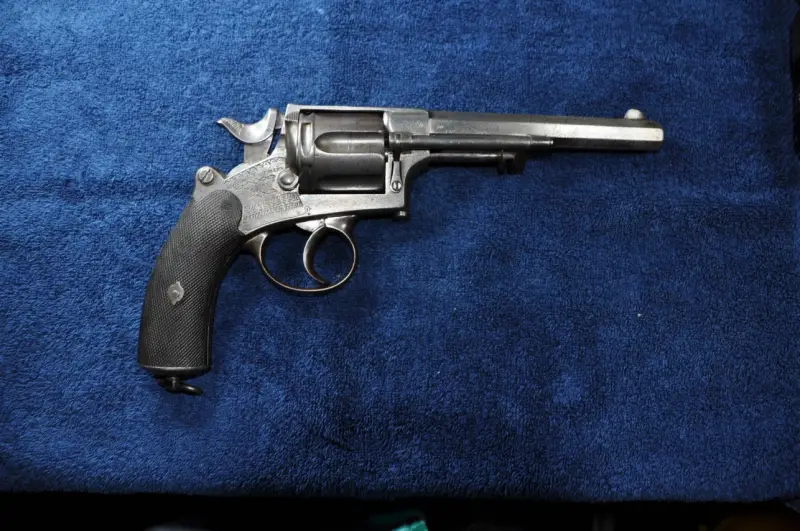
Kaufman revolver.
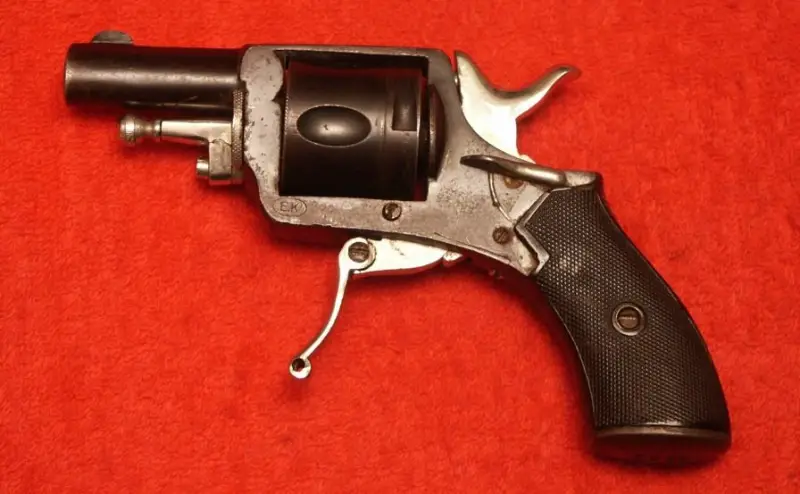
Bulldog revolver by Eduard Kettner from Liege, who released it in 1892! Interestingly, he was the founder of the Kettner trading house, which is still operating today! He added a safety (lever on the right) to his Bulldog and removed the trigger guard and thus got something new that could be advertised as a safer revolver to handle.
Alfred and François Quinapen produced centerfire revolvers with an open frame. On its right side there is an L-shaped key, which, when turned forward, moves the barrel and drum forward, thus freeing the latter for loading/discharging! A small metal strip is installed under the barrel, accompanying and supporting the drum when opening.
The weapon has the following marking: CAST STEEL, and it was often used in the production of weapons in Liege as an indicator of its quality, although you can write anything on the barrel!
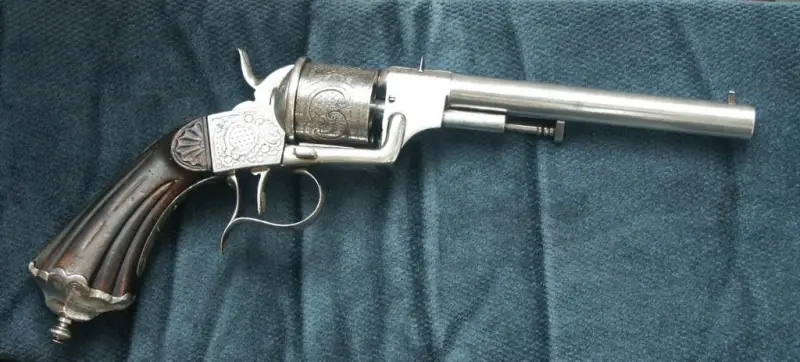
Revolver of Alfred and François Quinapen. Vintage design, isn't it?
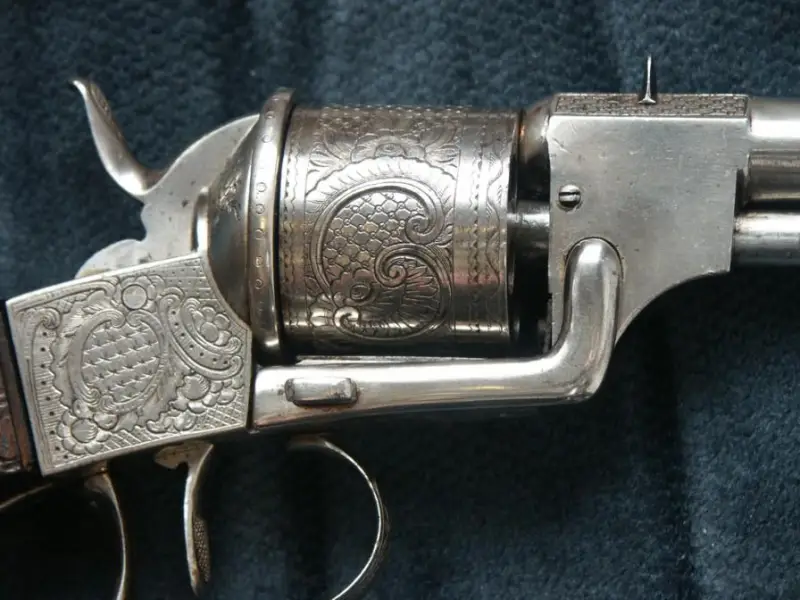
Just look at its decoration!
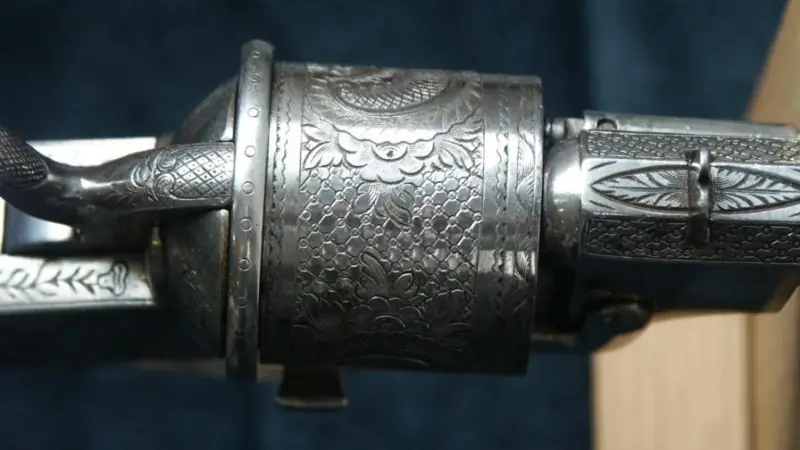
The drum engraving was especially good.
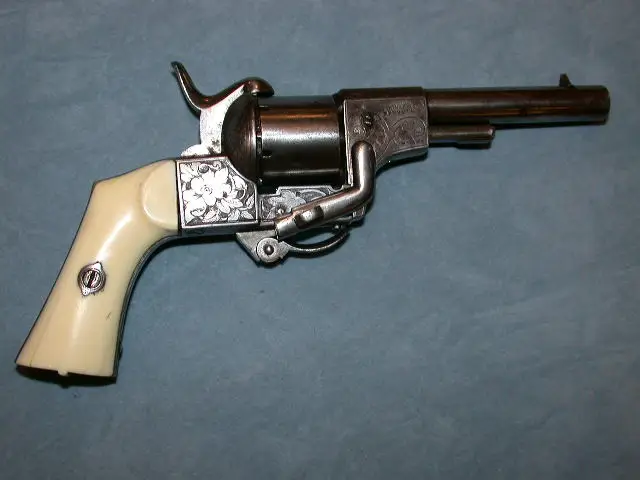
This is Alfred and François Quinapen's six-shot revolver with an open frame in 7 mm caliber. The drum control mechanism is still the same. But the handle is different. Bone! The revolver was released in 1872.
The Jacques Lacroix system revolver had a folding drum of an original design. Six-shot revolver, .450 caliber, double action. The peculiarity of the Lacroix system is that the drum axis ends with a lever. Taking hold of it, the shooter pulled the drum to the right, which provided access to his chambers for reloading.
According to the archives of the Liege Arms Museum, it was manufactured in 1872. Interestingly, the revolver has never been tested and does not have any markings (numbers, numbers, marks).
A patent application for a “revolving system using a device for extracting central fire cartridges” was filed by the designer in 1873. A second additional patent, covering "modifications made to the revolver system patented April 19, 1873," was filed on July 12, 1873. Interestingly, between 1873 and 1877, Jacques Lacroix filed three patents, gradually improving his design for a folding cylinder revolver.
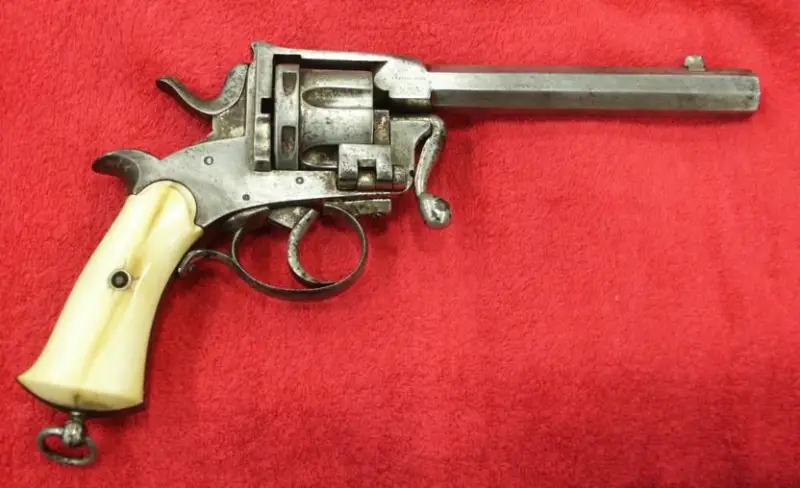
Revolver Lacroix. Right view.
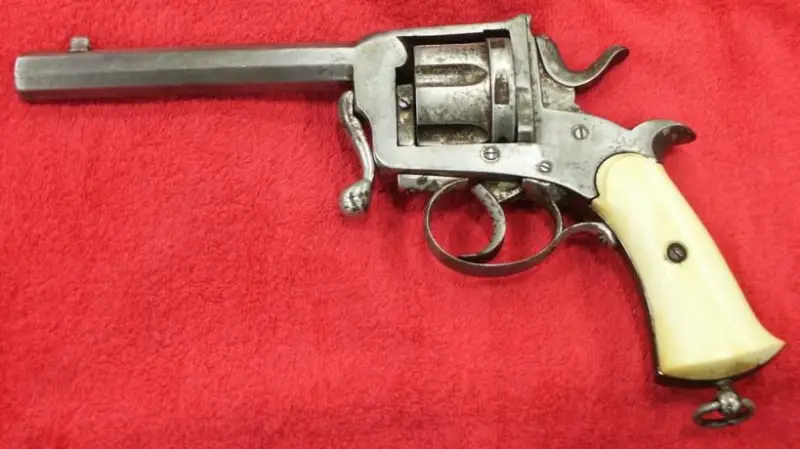
The same revolver. Left view.
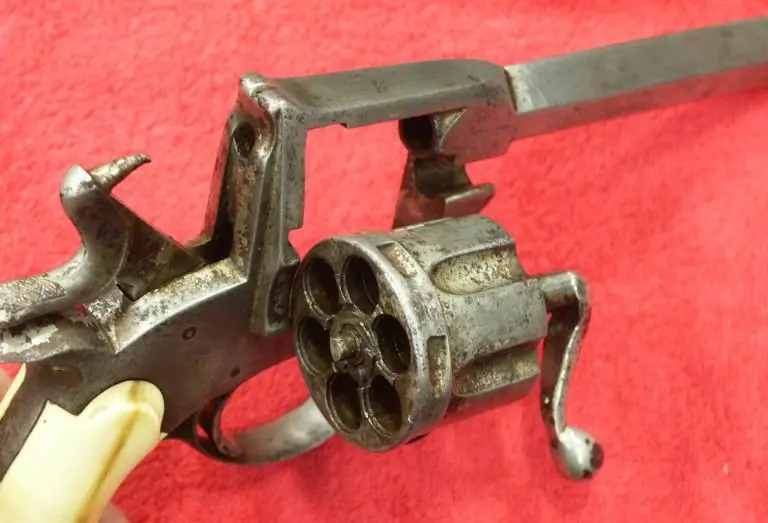
Revolver Lacroix. With the drum pulled out from the frame.
Lacroix also produced original pocket pistols that simultaneously served as a knife and fork.
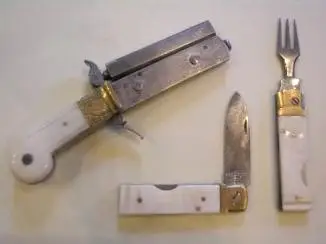
Here is one of these shooting “souvenirs”. A pistol to which a pocket folding knife and fork are attached.
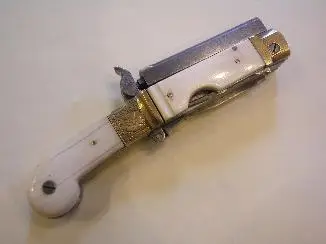
The same pistol in assembled form.
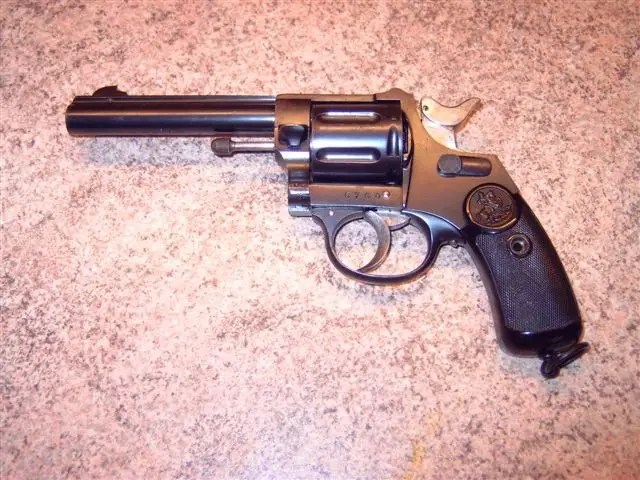
A William Gras revolver, also with a cylinder that flips to the right, like the 1910 model revolver. He worked in Liege, where he received five patents.
Who says that weapons are not subject to fashion?
It is also susceptible, just like muffs, gloves, skirts, bustles and everything else. For example, the Belgian gunsmiths Lamben and Titus produced very fashionable in Montenegro revolvers “Montenegro” of the Kuhne system with two frame connector levers and an extractor of the “Smith and Wesson” system. The drum holds five Gasser cartridges, 11 mm caliber, but could also be 11,2 mm and .44 Montenegrin.
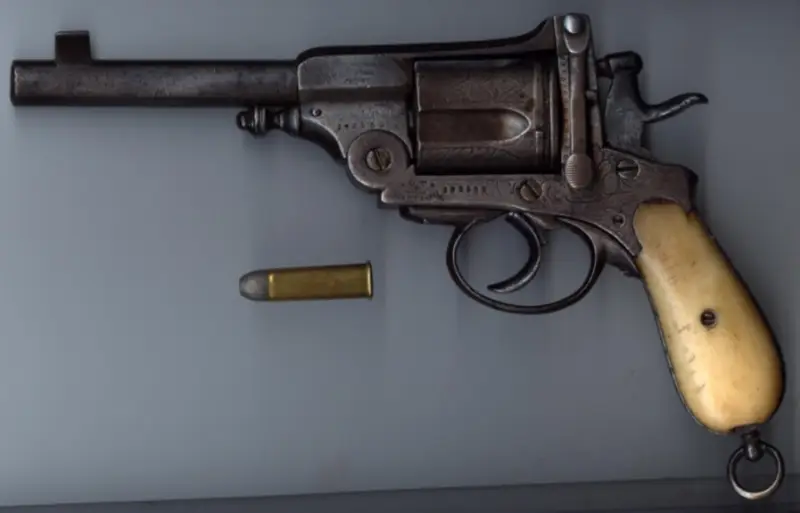
Here is this revolver, and what’s more, with a bone handle!
The Reminton rifle of the 1868 model was produced not only in the USA, but also in Belgium by the enterprise of Charles Nicolas Lardinois. The valve shutter for it was invented by an American named Leopold Geiger in 1863, improved by another American named Joseph Ryder, and produced in America by the E. Remington arms company in 1867–1868.
These rifles were made in Liege under a contract with the Remington company. And, of course, it’s impossible to pass by such an original weapon!

Rifle with bayonet made by Charles Nicolas Lardinois.
Another little-known gunsmith (and an equally little-known revolver, which, however, was produced and sold) is Larose Jean-François, a mechanic by profession who worked in Liege, on rue Saint-Severin No. 26, from 1859. Filed three patents for a revolver system with a central percussion mechanism. The revolver shown in the photographs is the subject of a patent filed on June 7, 1870 under No. 27706.
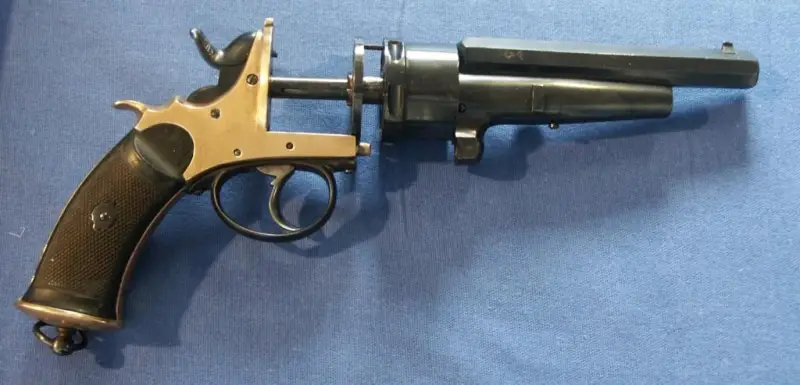
Looking at the photograph, it’s hard to say what’s so new and unusual about this revolver, but apparently there was something “special” about it, since Larose was given a patent for it!

It's a pity that small details are hard to see in this photo.
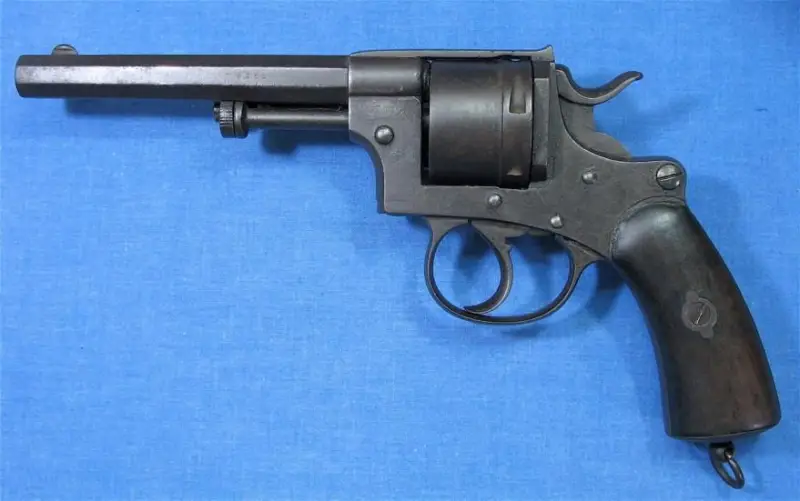
Revolver of the Lebo Brothers company.
Centerfire revolver, with a closed frame, produced by the company of the brothers Jules and Gustav Lebeau. The six-round drum is smooth and is loaded through the “Abadi door”. The octagonal barrel has a crescent-shaped front sight. The walnut plates are smooth and held in place by a screw and two winged rosettes. The handle ends with a ring attached to a rotary screw.
Time of manufacture: between 1877 and 1893. I got into our gallery solely because, again, it looks like a revolver. Large size only.
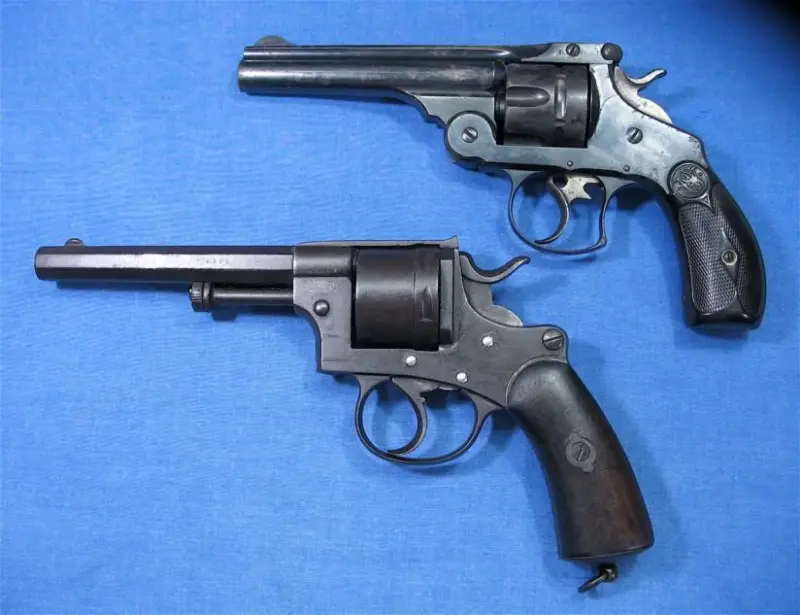
The same revolver is shown next to a Smith & Wesson Model 3 revolver for comparison.
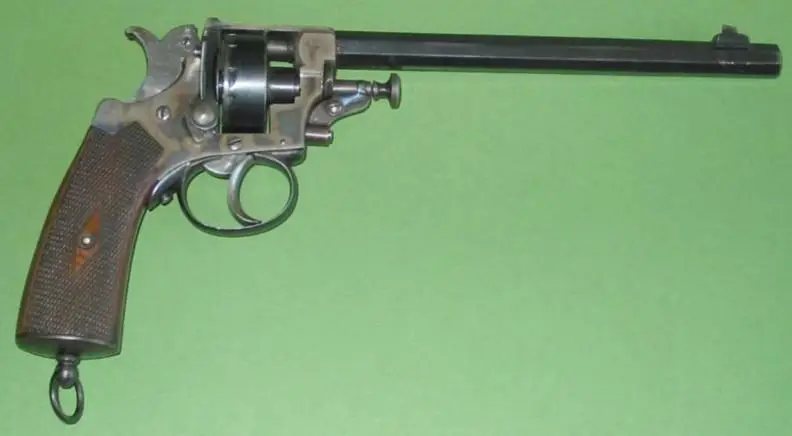
But this revolver is also a Lebo design, but chambered for the small Flaubert cartridge of 6 mm caliber! But it had a 12-round magazine and a rifled barrel as much as 20 cm long. You could easily shoot from a revolver of this design at home, but the stench from Flaubert’s cartridges was very strong!
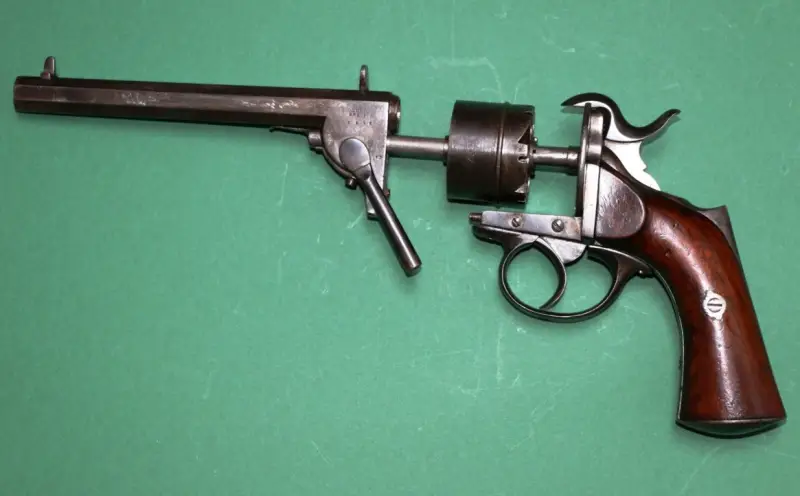
Hairpin revolver of the Liege gunsmith Pierre Antoine Laurent. Military model 12 mm caliber. This is how it was moved apart by a lever located on the left for reloading.
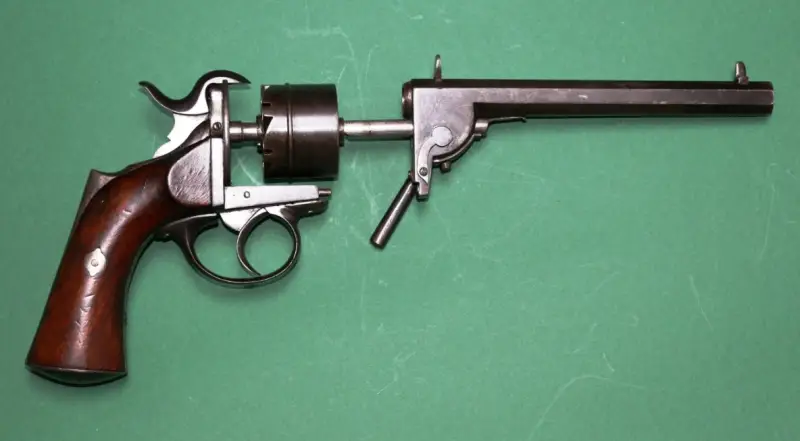
The same revolver. Right view.
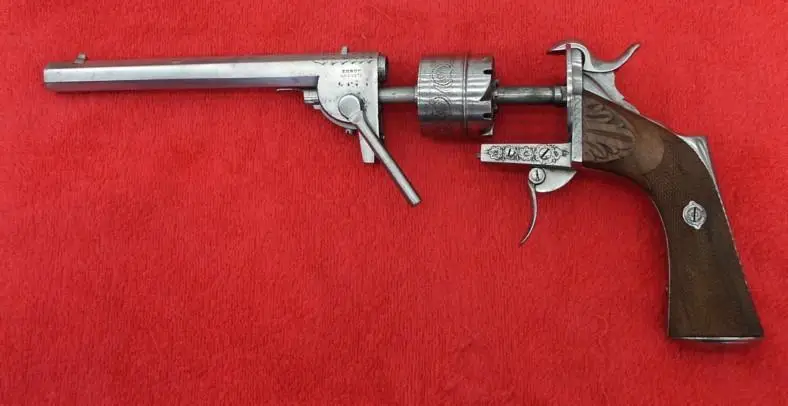
One of the varieties of the same revolver, but with a folding trigger. That is, the revolver was sold and, to meet demand, was even produced in different designs.
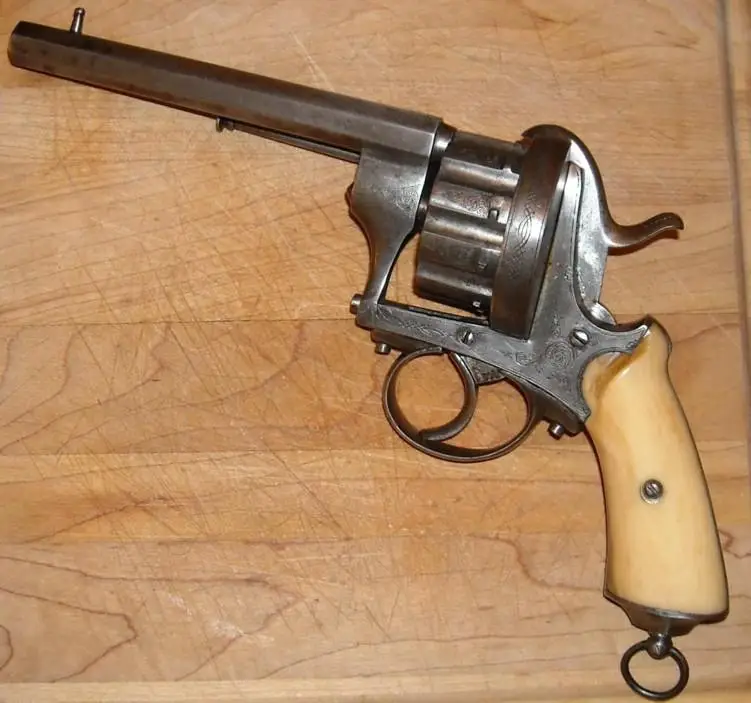
A revolver based on Lefoshe's design. It is an anonymous Liege copy, as evidenced by the only Liege stamp dating from 1877. It is possible that its manufacturer is the company Lovinfoss-Hardy François & Fils or Franken & Lunenschloss, also from Liege.
In general, the Liege residents copied everything from each other!
Please note that, unlike American ones, almost all European revolvers were double action. As evidenced by their characteristic triggers.
To be continued ...
Information